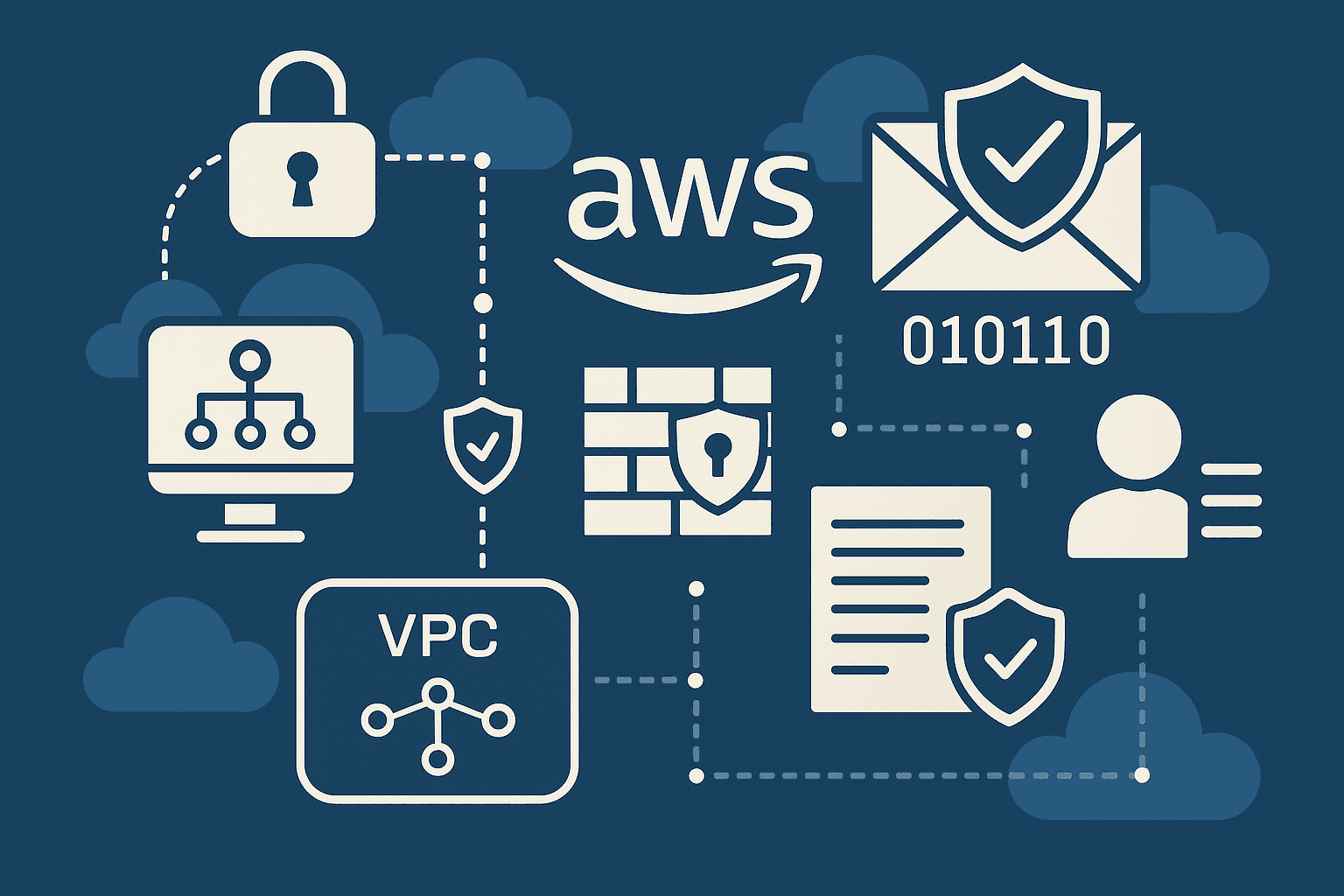Learn: Design secure workloads and applications
Concept-focused guide for Design secure workloads and applications.
~8 min read

Overview
Welcome, cloud architects and aspiring AWS pros! In this session, we’ll break down the core principles and practical strategies for designing secure workloads and applications, with a strong focus on AWS networking and security components. By the end, you’ll understand how to select and configure AWS services to protect your infrastructure, applications, and data—both at rest and in transit. You’ll also learn how to enforce access controls, manage encryption, and build for compliance, reliability, and high availability. Let’s dive deep into the patterns and reasoning skills you’ll need to ace scenario-based questions and real-world architectures!
Concept-by-Concept Deep Dive
Automated Security Assessment and Compliance
What It Is
AWS provides services that continuously scan your cloud resources and configurations to identify vulnerabilities, deviations from best practices, and compliance risks. These tools help catch issues early, reduce manual checks, and provide actionable remediation advice.
Key Components
- Automated Scanning: Looks for open ports, unpatched software, overly permissive IAM roles, and more.
- Integration with AWS Resources: Can connect with services like EC2, Lambda, S3, RDS, and IAM.
- Reporting and Remediation: Generates findings and can even automate some corrective actions.
Reasoning Recipe
- Identify the scope: Which AWS resources need assessment?
- Enable the relevant security service.
- Review reports or dashboards for flagged vulnerabilities.
- Prioritize remediation based on severity and compliance relevance.
Common Misconceptions
- Thinking manual security reviews are enough—automated tools catch what people often miss.
- Believing all issues are equally critical—use severity ratings to prioritize.
Securing Network Access and Traffic Flow
What It Is
This involves controlling which sources and destinations can communicate with your AWS resources, both within and outside the VPC. Security at this layer prevents unauthorized access and lateral movement.
Subtopics
Security Groups vs. Network ACLs
- Security Groups: Virtual firewalls at the instance level; stateful, meaning return traffic is automatically allowed.
- Network ACLs (NACLs): Operate at the subnet level; stateless, so return traffic rules must be explicitly set.
VPC Endpoints and Private Connectivity
- Allow you to connect to AWS services like S3 or DynamoDB without traversing the public internet.
- Reduce exposure and improve compliance for sensitive data.
VPN and Direct Connect
- VPN: Secures data in transit between on-premises and AWS via encrypted tunnels.
- Direct Connect: Provides a dedicated physical connection, which can be combined with VPN for encryption.
Step-by-Step Control Strategy
- Define required communication flows (who needs to talk to whom, and on what ports).
- Lock down security groups to only allow necessary inbound/outbound traffic.
- Use NACLs for additional subnet-level restrictions if needed.
- For private access to AWS services, use VPC endpoints.
- Use VPN or Direct Connect for secure hybrid cloud architectures.
Common Misconceptions
- Assuming security groups and NACLs are interchangeable; they serve different purposes and operate at different layers.
- Forgetting to restrict outbound traffic when necessary.
Encryption: At Rest and In Transit
What It Is
Encryption protects data from unauthorized access during storage ("at rest") and while being transmitted ("in transit").
At Rest
- Can be enabled on services like S3, RDS, and EBS using AWS-managed keys or customer-managed keys (KMS).
- Often a compliance requirement for sensitive workloads.
In Transit
- Achieved using SSL/TLS protocols for applications, load balancers, and file transfer solutions.
- For inter-region or hybrid connections, VPN or encrypted Direct Connect can be used.
Encryption Enablement Recipe
- For storage, enable encryption using the service’s settings (e.g., check the encryption box for RDS).
- For in-transit data, configure endpoints or clients to use HTTPS or other secure protocols.
- For custom encryption needs, consider AWS KMS integration.
Common Misconceptions
- Believing that enabling encryption at rest also covers data in transit—they must be configured separately.
- Assuming all AWS services encrypt data by default; check each service’s documentation.
Granular Access Control and Segmentation
What It Is
This is about enforcing least privilege access—granting users, applications, and networks only the permissions they need and nothing more.
Strategies
IAM Policies and Roles
- Attach precise permissions to users, groups, or roles.
- Use policies to restrict S3 access, Lambda actions, and more.
Security Groups and NACLs
- Use layered rules to segment environments (e.g., dev vs. prod, app vs.
🔒 Continue Reading with Premium
Unlock the full vlog content, professor narration, and all additional sections with a one-time premium upgrade.
One-time payment • Lifetime access • Support development
Join us to receive notifications about our new vlogs/quizzes by subscribing here!